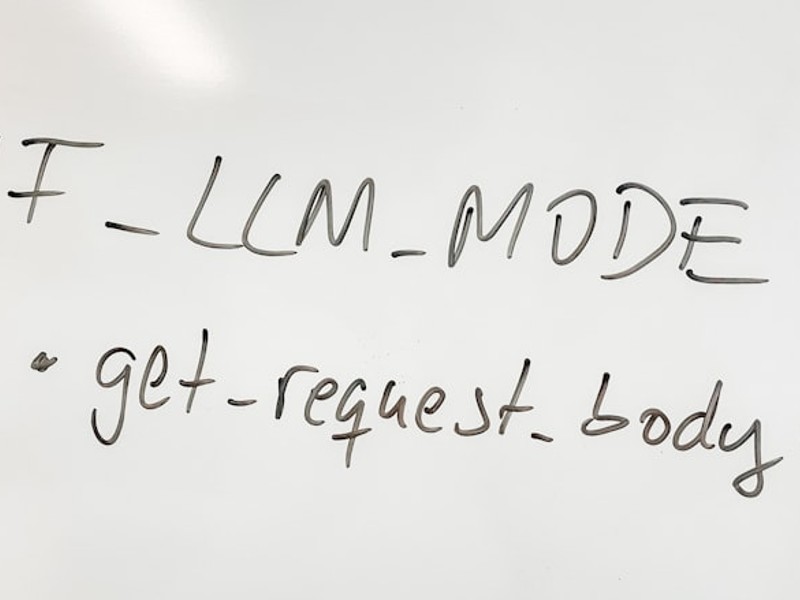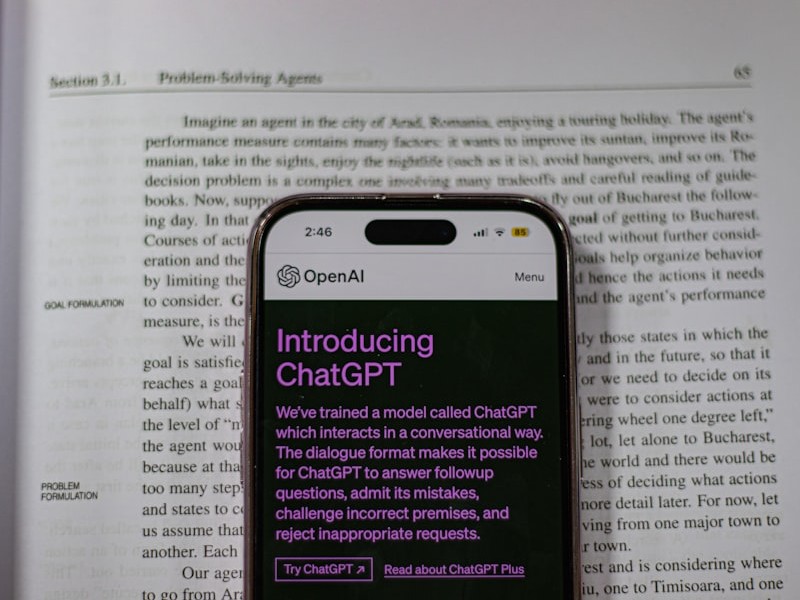Prompt Engineering Tutorial for Beginners: Master AI Prompts
The world of Artificial Intelligence (AI) is rapidly evolving, and at the heart of its power lies prompt engineering. This isn't just about asking questions; it's about crafting precise, effective instructions that unlock the full potential of AI models like ChatGPT, Bard, and others. If you're a professional or enthusiast looking to harness the power of AI, this prompt engineering tutorial for beginners is your starting point. We'll cover everything from the basics to more advanced techniques, equipping you with the skills to get the most out of AI.
1. What is Prompt Engineering?

the word learn languages spelled out of scrabble tiles
Prompt engineering is the art and science of crafting effective prompts to elicit desired responses from large language models (LLMs). Think of it as learning to speak the language of AI. A well-engineered prompt can transform a vague request into a precise instruction, leading to more accurate, relevant, and creative outputs.
1.1 Why is Prompt Engineering Important?
In the early days of AI, simply asking a question might suffice. However, as models become more sophisticated, so must our methods. Prompt engineering is crucial because:
- Improved Accuracy: Precise prompts lead to more accurate and reliable responses.
- Enhanced Creativity: Well-crafted prompts can unlock the creative potential of AI, generating novel ideas and solutions.
- Increased Efficiency: Effective prompts minimize the need for multiple iterations and corrections, saving time and resources.
- Customized Outputs: Tailored prompts allow you to fine-tune AI responses to meet specific needs and requirements.
- Responsible AI Use: Carefully designed prompts can help mitigate biases and prevent the generation of harmful or inappropriate content.
1.2 Key Concepts in Prompt Engineering
Before diving into the practical aspects, let's define some key concepts:
- Prompt: The input text provided to the AI model.
- LLM (Large Language Model): The AI model that processes the prompt and generates a response (e.g., ChatGPT, Bard).
- Token: The basic unit of text that the LLM processes (e.g., words, parts of words, punctuation).
- Context Window: The maximum number of tokens the LLM can process at once. This limits the length of the prompt and the generated response.
- Temperature: A parameter that controls the randomness of the LLM's output. Higher temperatures lead to more creative but potentially less coherent responses. Lower temperatures produce more predictable and consistent results.
- Top-p (Nucleus Sampling): Another parameter that controls the randomness of the LLM's output. It selects the smallest set of tokens whose cumulative probability exceeds the top-p value.
2. Basic Prompting Techniques

a white board with writing written on it
This prompt engineering tutorial for beginners would be incomplete without the fundamentals. Let's start with some basic techniques:
2.1 Clear and Concise Instructions
The foundation of effective prompting is clarity. Avoid ambiguity and use precise language. Specify exactly what you want the AI to do.
Example (Poor Prompt): "Write something about cats."
Example (Good Prompt): "Write a short paragraph describing the physical characteristics and common behaviors of domestic cats."
2.2 Providing Context
Giving the AI context helps it understand your request better. Include relevant background information, constraints, and desired outcomes.
Example (Poor Prompt): "Write a product description."
Example (Good Prompt): "Write a product description for a new noise-canceling headphone targeting young professionals. Highlight its comfort, sound quality, and battery life."
2.3 Specifying Format and Style
Tell the AI how you want the output to be formatted. Do you need a list, a paragraph, a poem, or a code snippet? Specify the desired tone and style as well.
Example (Poor Prompt): "Summarize this article."
Example (Good Prompt): "Summarize this article in three bullet points, focusing on the key findings and implications. Use a professional and concise tone."
2.4 Using Keywords and Phrases
Incorporate relevant keywords and phrases to guide the AI's response. Think about the terms you would use if you were searching for the information yourself.
Example (Poor Prompt): "Explain the concept of blockchain."
Example (Good Prompt): "Explain the concept of blockchain technology, including its key features, such as decentralization, immutability, and cryptography."
3. Advanced Prompting Techniques

a cell phone sitting on top of an open book
Once you've mastered the basics, you can explore more advanced techniques to unlock even greater potential.
3.1 Few-Shot Learning
Few-shot learning involves providing the AI with a few examples of the desired input-output relationship. This helps the AI understand the pattern and generate similar outputs for new inputs.
Example:
Translate English to French:
English: The cat sat on the mat.
French: Le chat s'est assis sur le tapis.
English: The dog barked loudly.
French: Le chien a aboyé fort.
English: The bird flew away.
French:
The AI should be able to infer the translation pattern and provide the correct French translation for the last sentence.
3.2 Chain-of-Thought Prompting
Chain-of-thought prompting encourages the AI to explain its reasoning process step-by-step before providing the final answer. This can improve the accuracy and transparency of the AI's responses, especially for complex or multi-step problems.
Example:
Question: Roger has 5 tennis balls. He buys 2 more cans of tennis balls. Each can has 3 tennis balls. How many tennis balls does he have now?
Let's think step by step:
Roger initially has 5 tennis balls.
He buys 2 cans of tennis balls, each with 3 balls, so he gets 2 * 3 = 6 tennis balls.
In total, he has 5 + 6 = 11 tennis balls.
Answer: 11
3.3 Role-Playing
Assign a specific role or persona to the AI. This can help it generate more creative and relevant responses by adopting a particular perspective or style.
Example:
Act as a seasoned marketing consultant. Provide advice on how to improve the social media strategy for a small business selling handcrafted jewelry.
3.4 Using Delimiters
Use delimiters (e.g., ```, """, <>) to clearly separate different parts of the prompt, such as instructions, context, and examples. This helps the AI understand the structure of the prompt and avoid confusion.
Example:
Summarize the following article, which is enclosed in triple quotes:
"""[Insert Article Text Here]"""
4. Tools and Platforms for Prompt Engineering
Several tools and platforms can help you experiment with prompt engineering and optimize your prompts:
- OpenAI Playground: A web-based interface for interacting with OpenAI's language models, including GPT-3 and ChatGPT. It allows you to easily test different prompts and adjust parameters like temperature and top-p.
- Google AI Studio (MakerSuite): Google's platform for prototyping and experimenting with generative AI models, including Bard. It offers features for prompt design, data management, and model evaluation.
- PromptPerfect: An AI-powered prompt optimization tool that automatically refines your prompts to improve their effectiveness.
- LangChain: A framework for building applications powered by language models. It provides tools and abstractions for prompt management, model integration, and chain-of-thought reasoning.
- PromptFlow: A development tool designed to streamline the end-to-end development cycle of LLM-based AI applications, from ideation, prompting, evaluation, to deployment.
External Link: OpenAI Playground
External Link: Google AI Studio
5. Prompt Engineering for Specific Applications
Prompt engineering is not a one-size-fits-all approach. The best prompts will vary depending on the specific application and the capabilities of the AI model.
5.1 Content Creation
For content creation, focus on providing detailed instructions and specifying the desired tone, style, and format. Use examples to guide the AI and iterate on the prompts based on the generated outputs.
Example:
Write a blog post about the benefits of meditation for stress reduction. Use a conversational tone and include personal anecdotes. Target a general audience.
5.2 Code Generation
For code generation, be precise about the programming language, the desired functionality, and any specific requirements or constraints. Use comments to explain the code and provide examples of input and output.
Example:
Write a Python function that calculates the factorial of a given number. Include error handling for invalid inputs. Add comments to explain each step of the calculation.
5.3 Data Analysis
For data analysis, provide clear instructions on the data set, the desired analysis, and the expected output format. Use examples to illustrate the desired calculations or visualizations.
Example:
Analyze the following sales data and identify the top-selling products by region. Present the results in a table with columns for product name, region, and sales revenue.
6. Current Trends in Prompt Engineering (2024/2025)
The field of prompt engineering is constantly evolving. Here are some of the current trends to watch:
- Automated Prompt Optimization: AI-powered tools that automatically generate and refine prompts based on performance metrics.
- Prompt Engineering as a Service (PEaaS): Platforms that offer prompt engineering services to businesses and individuals, providing access to expert prompt engineers and optimized prompts for various applications.
- Multi-Modal Prompting: Combining text prompts with other modalities, such as images, audio, and video, to create more complex and nuanced instructions.
- Prompt Chaining: Linking multiple prompts together to create a sequence of operations, allowing for more complex and sophisticated AI workflows.
- Personalized Prompting: Tailoring prompts to individual users based on their preferences, history, and context.
7. Ethical Considerations in Prompt Engineering
As AI becomes more powerful, it's crucial to consider the ethical implications of prompt engineering. Here are some important considerations:
- Bias Mitigation: Carefully design prompts to avoid perpetuating or amplifying biases in the AI model.
- Harmful Content Prevention: Implement safeguards to prevent the generation of harmful, offensive, or inappropriate content.
- Transparency and Explainability: Strive for transparency in the prompting process and ensure that the AI's responses are explainable and understandable.
- Privacy Protection: Avoid including sensitive or personal information in prompts.
- Responsible Use: Use AI responsibly and ethically, considering the potential impact on society and individuals.
7.1 Mitigating Bias in Prompts
AI models are trained on vast datasets, which may contain biases. These biases can be reflected in the AI's responses if the prompts are not carefully designed. To mitigate bias, consider the following:
- Use inclusive language: Avoid gendered pronouns, stereotypes, and other biased terms.
- Provide diverse examples: Use examples that represent a wide range of perspectives and backgrounds.
- Test prompts for bias: Evaluate the AI's responses for any signs of bias and adjust the prompts accordingly.
8. Best Practices for Prompt Engineering
To maximize the effectiveness of your prompts, follow these best practices:
- Start with a clear goal: Define what you want to achieve with the prompt.
- Be specific and concise: Use precise language and avoid ambiguity.
- Provide context: Give the AI relevant background information and constraints.
- Specify the desired format and style: Tell the AI how you want the output to be formatted.
- Use keywords and phrases: Incorporate relevant terms to guide the AI's response.
- Experiment and iterate: Test different prompts and refine them based on the results.
- Document your prompts: Keep track of the prompts you've used and their corresponding outputs.
- Stay up-to-date: Follow the latest trends and best practices in prompt engineering.
This prompt engineering tutorial for beginners provided a solid foundation. Remember to practice and experiment with different techniques to find what works best for you. The key is to continuously learn and adapt as AI models evolve.
Conclusion
Mastering prompt engineering is becoming an increasingly valuable skill in the age of AI. By understanding the principles and techniques outlined in this prompt engineering tutorial for beginners, you can unlock the full potential of AI models and achieve your desired outcomes. Start experimenting with different prompts today and embark on your journey to becoming a proficient prompt engineer. Don't be afraid to explore, iterate, and contribute to the growing field of prompt engineering. Your journey to mastering AI begins now!
[Internal Link: Link to a related article on AI ethics]
FAQ: Prompt Engineering Tutorial for Beginners
Q1: What is the best AI model to use for prompt engineering?
The best AI model depends on your specific needs and application. ChatGPT and Bard are popular choices for general-purpose tasks, while other models may be better suited for specific domains, such as code generation or image recognition.
Q2: How long does it take to become proficient in prompt engineering?
The time it takes to become proficient in prompt engineering varies depending on your background, experience, and dedication. However, with consistent practice and learning, you can develop a solid foundation in a few weeks or months.
Q3: Is prompt engineering a technical skill?
While prompt engineering doesn't require extensive technical knowledge, it does involve understanding the capabilities and limitations of AI models. A basic understanding of programming concepts can also be helpful.
Q4: What are the common mistakes to avoid in prompt engineering?
Common mistakes include using ambiguous language, failing to provide context, neglecting to specify the desired format, and not experimenting with different prompts.
Q5: Where can I find more resources to learn about prompt engineering?
You can find more resources on the OpenAI website, the Google AI Studio website, online courses, research papers, and community forums. This prompt engineering tutorial for beginners is a great starting point!


